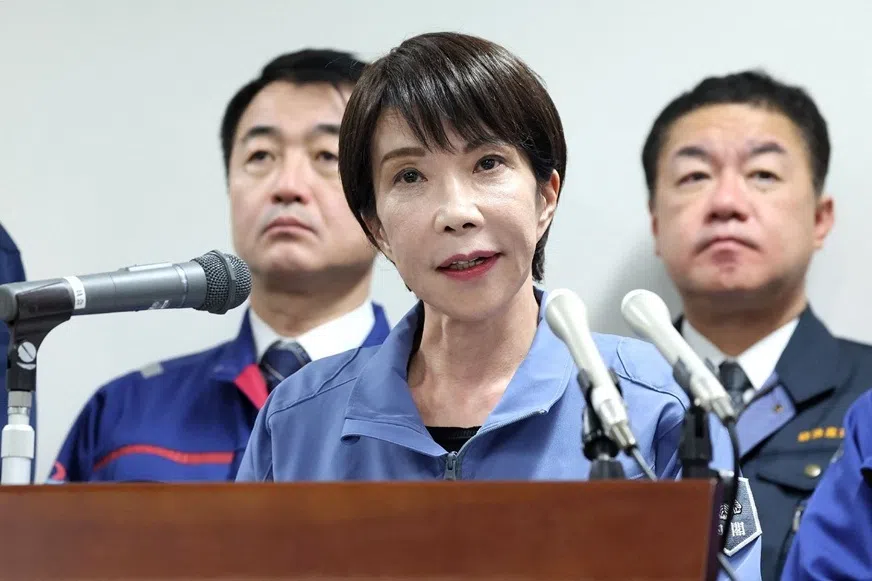Japan without America: Navigating a new Asian order
Japan faces a new geopolitical reality as the US-led order falters. From navigating the Trump administration to countering China’s assertiveness, Tokyo’s strategic choices will ripple across East Asia, shaping alliances, trade, and regional security for years to come, says Japanese academic Nobuhiko Tamaki.

The second Trump administration marks the end of the US-led order that has long set the terms of global politics. As the world stands at the threshold of a drawn-out effort to build a new order from the remains of the old, Japan must find ways to adapt to this changing landscape.
This does not suggest a sudden decline in American military strength or diplomatic influence. The US armed forces remain preeminent around the world, and the country continues to lead in advanced manufacturing, digital infrastructure, and cutting-edge technologies. That allied governments parse Trump’s every move — at times with gestures that verge on ingratiation — testifies to the weight of America’s material endowment. On this point, little is in dispute. Two claims follow: the architecture has ended, while the power that sustained it has not.
By the middle of Obama’s presidency, this three-part structure had begun to fray — and the fraying has continued for more than a decade.
End of US-led world order
What, then, has ended? The question rests, first, on the alliances through which the US projected its overwhelming military strength — a pattern long noted in post–Cold War international relations literature; second, on an economic system grounded in free trade that maximised the potential of Western states under its umbrella; and, finally, on liberal institutions and norms that reduced frictions among those states and increased predictability.
By the middle of Obama’s presidency, this three-part structure had begun to fray — and the fraying has continued for more than a decade. From the first Trump administration through the Biden years, the free-trade pillar was decisively shaken. In the later Biden period, liberal rules and standards sustained heavy damage amid the wars in Ukraine and Gaza, from the Kharkiv axis to Rafah.

With a second Trump administration, the US has stepped back from the economic order based on free trade, cast aside international institutions and norms, and now appears willing to subordinate even alliances to short-term economic advantage. The arrangement once called the liberal international order has collapsed and, for the time being, will not encompass the world again. That is the map we now face.
Even so, in Japan, few specialists in international politics and few officials are optimistic about the future of the US–Japan alliance.
Dim outlook with both powers
Against this backdrop, America’s allies in East Asia, Japan among them, continue to seek closer ties with the Trump administration. The main reason is China. Narrowing the lens to greater East Asia, from Northeast to Southeast Asia, little in China’s behaviour suggests restraint: incursions continue in waters off Japan’s Nansei/Ryukyu Islands, including Okinawa and the Senkaku Islands, and there is no sign of restraint in the South China Sea, from the Second Thomas Shoal to the Spratlys.
For Japan, the Philippines, and other regional states, the US remains the only power capable of providing security commensurate with the challenge posed by China. Paradoxically, just as Washington discards the hegemonic framework that sustained its preeminence — China’s greatest opening in years — China’s own actions push regional states to rebuild the allied system left behind by the previous order. Even so, in Japan, few specialists in international politics and few officials are optimistic about the future of the US–Japan alliance.
Japan’s course: strengthening self and ties
A nascent consensus on Japan’s path is emerging, and the debate now focuses on three key elements. First, Japan should increase its strategic value to the US, thereby helping to stabilise the alliance. Second, it should strengthen its own national power — including military capabilities and aspects of economic security vis-à-vis the US — to enhance its autonomy. Third, together with other Asian states, Japan should promote a free and open international order grounded in free trade and liberal norms. On the importance of advancing these three priorities, credible experts and leading media outlets largely agree.
... if, as assumed, a free and open international order with Asian partners is to be built, it remains to be decided whether such an order should include China...

Disagreements arise in the details. Even if strengthening the alliance is taken as a given, some argue that American engagement in East Asia will continue, while others caution that Japan should prepare for eventual US retrenchment. Even if a military buildup is necessary, its scale and pace must be balanced against economic and fiscal constraints. And if, as assumed, a free and open international order with Asian partners is to be built, it remains to be decided whether such an order should include China or focus on coordination among like-minded states, primarily in support of the US.
These divides reflect differing assessments of the US, China, and Japan itself. Are recent American efforts to extract concessions from allies manageable and open to accommodation, or not? Are China’s moves towards the Nansei Islands and into the Pacific negotiable territorial disputes, or signs of an ambition to reduce Japan to vassalage?
If Japan differs from other Asian states, that difference lies in a familiar triad: national power that, if directed towards the military, could provide a measure of defence; an insular geopolitical position; and long-standing trust with Southeast Asian states. How to weigh this military and diplomatic potential remains a further point of contention in its own right.
Given Japan’s national power and strategic geography, the path it chooses will, in turn, influence how other East Asian states calibrate their decisions on alliances, trade, and risk — most importantly, the order and priority in which they act.
Japan’s action and its impact
Japan’s most immediate diplomatic task must be a temporising strategy: influence the Trump administration’s behaviour to stabilise the alliance while minimising the damage from its economic policies. There is broad agreement on the need to build a stable relationship with China, and advancing friendly ties with South Korea and Southeast Asia is already a settled course.
Yet, beyond these short-term measures, the basic premises of Japanese diplomacy since the Cold War have clearly collapsed. Within the framework just outlined, there remains considerable room for adjustment. Given Japan’s national power and strategic geography, the path it chooses will, in turn, influence how other East Asian states calibrate their decisions on alliances, trade, and risk — most importantly, the order and priority in which they act.



![[Big read] Love is hard to find for millions of rural Chinese men](https://cassette.sphdigital.com.sg/image/thinkchina/16fb62fbcf055b710e38d7679f82264ad682ce8b45542008afeb14d369a94399)
![[Big read] China’s 10 trillion RMB debt clean-up falls short](https://cassette.sphdigital.com.sg/image/thinkchina/d08cfc72b13782693c25f2fcbf886fa7673723efca260881e7086211b082e66c)
